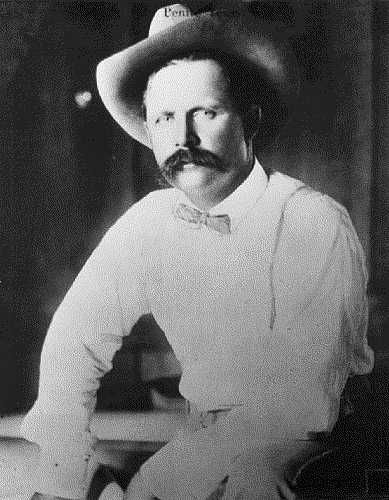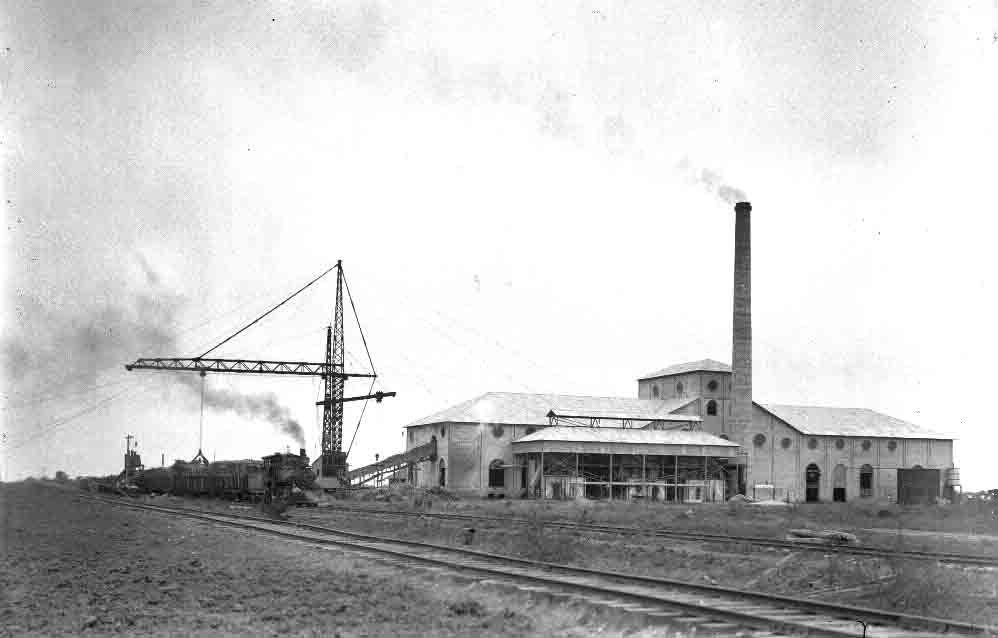BY NORMAN ROZEFF
EDITOR’S NOTE: This is next part in an ongoing series on San Benito’s Sam Robertson. The previous parts can be found at www.valleystar.com.
“This region got its first real shock in June, 1904, when I crossed the Arroyo Colorado with an army of Irish, Negro and Mexican laborers and some old wheezy wood — burning locomotives, pile drivers building the railroad through the jungles to Bessie, now San Benito, and on to Brownsville. All the wild animals and young and old Mexicans were scared to death of these wild Irish, Negroes and locomotives and their fears were well founded for it meant so–called civilization and progress was about to arrive and these people’s happy lives were about to end.
The wild animals were killed and ran away and these real Americans whose ancestors had lived happily in the jungles for a thousand years, had to go to work with pick, shovel and hoe or go bootlegging for an existence. They are now often unable to find work with which to buy corn and frijoles. I am not overly proud of my part in helping to bring progress and civilization to this region to help ruin the lives of those who were here before me.
In June, 1904, while laying the railroad track through Bessie, I made the acquaintance of Oliver Hicks and James Landrum of the Powers Estate and made a verbal contract to build the San Benito irrigation canal, the town of San Benito and to purchase thousands of acres of land from the owner of the old Powers Estate. They knew I had no money at that time. I was on crutches with a broken leg and several broken ribs and had to get around on my old white horse which would lay(sic) down to let me get on his back. But these gentlemen had through two long year to put over the San Benito project.
…a few days after meeting Mr. Hicks and Mr. Landrum, I rode up the Fresno resaca through the Quates Ranch into Rancho Viejo Resaca near your school and on the river near Las Rucias and selected the route to what was to be the San Benito canal.
The following two years, I spent a large part of my time in surveying and raising the capital to put over the San Benito project. Finally, in November, 1906, after having finished the Santa Maria canal, first section of the Mercedes canal, and a railroad contract for the T. & B. V. R. R. on all of which jobs I had made some money, I moved in my team outfit from Mercedes and started construction of the San Benito canal.
First work was done near Lock No. 2. I continued on this canal construction until 1913.
In 1907, the three Heywood brothers, Judge Batts, Mrs. Ed. Rowson, William Stenger and Mr. Swanson came in with me and we formed the San Benito Land and Water Co. with a capital of $500,000.
Later we sold the company’s bonds for $1,050,000, sold town lots and thousands of acres of land at a good profit, used every dollar of all this money in development
of the San Benito project.
The stockholders who stayed with the company never saved a dollar of their capital and there was some loss to bondholders but I had ten years of hard, interesting work, made some enemies and many friends.
Early in 1917, I left the country for the American Army in France, broke but happy.* Thus ended my part of the crime of building the San Benito project.
After the formation of the San Benito Land and Water Co., thousands of men grubbed out this jungle, killed the snakes, ticks and fleas, killed most of the wild animals and birds and scared the balance away.
The first orchard was planted near Highland in 1908. H. G. Stilwell, Sr., now of Brownsville, started the San Benito Nursery, planted alfalfa, red clover, grapes, bananas, coconuts, pineapples, pears, oranges, lemons, kumquats, aguacates, Japanese plums, none of which did well. A hard frost ruined most of the fruit and the clover and alfalfa died out. Mr. Stilwell also put out English walnuts, almonds, pecans and Japanese tung nuts. But he was succeeded by a cotton farmer and the trees died.
Colonel Coleman quit and went to Florida but his orchard still carries on. The country around Highland settled rapidly from 1908 to 1913. But alfalfa, sugarcane, fruit, low markets, boll weevils and other things discouraged many farmers who were forced to quit the country. The canal got in the hands of receivers, and bandits from the Mexican side of the river raided the country and sacred away more people in 1915 and 1916 but the Army came to the border in 1915 and business got good by 1917.
In 1910 and 1911, in order to encourage land sales, I promoted and built the San Benito and Rio Grande Valley Railway from Sugarland through Rio Hondo, San Benito, Highland, La Paloma, Carricitos, Los Indios, Rangerville to Santa Maria and from Madero through Mission to Monte Carlo. This railroad was called the spiderweb and the “Back Door Railroad.”
I sold the railroad to the Equitable Trust Co. of New York for the account of B. F. Yoakum and associates. I made a nice profit on its construction and put it all into the San Benito project and lost it but the railroad is still here and has been acquired by the Missouri Pacific System. The little railroad operated with a gasoline motor car for passengers and express and did a good business until put out of business by autos and trucks. It always used steam locomotives for freight service.
The World War coming on in 1914 in which America joined in 1917 and the shipping of 125,000 soldiers to the Valley in 1915 and 1916 made a period of about 14 years of great financial prosperity for the Valley and the nation. This prosperity built on the killing and destruction of millions of people caused wild speculation, lavish extravagance, foolish spending and the voting of enormous bond issues which you, your children and your grandchildren won’t have paid off for many years. Us older folks have left you a heritage of debt, which to try to pay off you will have to study hard, work hard and think clearly and not try to get by on optimism, boasting, bragging and luck as most of us older people have done for 15 years.
It is up to you to prove that progress of 20th Century civilization, paved roads, the automobile, radio, picture shows (Note: Television had not been invented.), the 1930-31 system of education and what our President calls the ‘high plane of living’ is an improvement over the more primitive life lived by the people here previous to 1904.
In 1904, it was my good fortune and privilege to be a guest at Rancho Cipres at the Landrum home on the Military road. This was the most, delightful, hospitable home it was ever my privilege to enter. They had a dozen servants, well fed, happy and contented and all loved their dear patron who was a real father, protector to all his people. In 40 years he never had a lock on home or storehouse.
During the bandit troubles, the young girls stayed at home under protection of the servants as safe as if in Washington, D. C. but on this ranch there was discipline, all obeyed orders and no one touched a thing which did not belong to them. No traveler ever passed Rancho Cipres who was not invited to rest, feed his horse in the corral and dine with the family. There were flowers, good music, splendid food and soft beds and a royal welcome for all.
It is up to you young folks to make the Highland District as happy as it was previous to 1904. By hard work, hard study, wide reading and the substitution of sound thinking for optimism and boasting and trusting to luck, I have confidence you will do this and win. Del Mar, Texas, Dec. 1, 1931, Sincerely, Sam A. Robertson.” (Editor’s Note – Del Mar was on Boca Chica beach which Robertson owned at the time).







